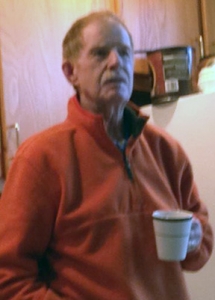This Is Why We Work to Improve Care Coordination
According to the Centers for Medicare & Medicaid Services (CMS), one in five Americans aged 65+ is readmitted to the hospital within 30 days of discharge. Up to 75 percent of those readmissions are preventable. This is the true story of Walter Haynes, 73, admitted for a heart attack in May 2015 and the complications that followed.
———
Shelley Matthews has been working actively in a care coordination community for over three years to reduce hospital readmissions and improve care for older adults. She is Director of the Area Agency on Aging & Disability in Jackson, Tenn., and a community leader for Connected Transitions, one of several Qsource care coordination communities created to help achieve these goals.
Recently, her efforts hit close to home with the hospitalization of her step-father, Walter Haynes.
In May 2015, Haynes, 73-years-old, felt the symptoms of heart attack. He was retired, but working at a golf course in Tennessee.
“He’s the type of person that if they didn’t pay him to work there, he would pay them,” Matthews said of her step-father’s work ethic and love for golf.
He was rushed by ambulance to a small local hospital (Hospital #1), where he had an echocardiogram and x-rays.
The doctors determined that he needed a triple bypass and wanted to transfer him to major metropolitan hospital (Hospital #2).
 However, Hospital #2 couldn’t take him because their cath lab was full. Four hours later, they sent him to a different hospital (Hospital #3).
However, Hospital #2 couldn’t take him because their cath lab was full. Four hours later, they sent him to a different hospital (Hospital #3).
Before being transferred, Hospital #1 gave him high doses of a blood thinner. When he arrived at Hospital #3, the surgeons determined that the dosage was too high, so they decided to wait five days before performing the surgery.
On Day five, his blood was still too thin. They waited two more days.
“The surgery proved to be more serious than originally thought,” Haynes said.
He needed six bypasses, not three, and a valve repaired. Within 24 hours of the surgery, he had flat-lined once and was revived. Within 48 hours, he had received 18 pints of whole blood, platelets and plasma.
Haynes pulled through, and after 18 days in the hospital, was finally discharged on a Saturday. The nurse gave him a list of new medications he would be taking, performed medication reconciliation and provided instructions and a defibrillation vest to wear for two weeks.
After the two-hour drive home, he headed straight to the pharmacy for his medications, but the pharmacist noticed one was missing—a statin drug, which was used to lower cholesterol. It was listed on his medication list, but there was no prescription for it.
When his wife called to get the prescription, Hospital #3 said they couldn’t help him until the next day, a Sunday. When they called back on Sunday, the hospital said call back on Monday. Finally, after several messages and rerouted calls, they got the surgeon’s voicemail and left a message. When they didn’t receive a return call, they contacted the primary care physician who finally prescribed the statin.
“It was a really difficult time,” Haynes said. “Leaving the hospital without the necessary prescriptions was a set-back I didn’t need.”
He began three weeks of home health care. The home health nurse checked his incisions and made a list of all the meds he had been given. She did not note that he should have also been on a blood thinner to reduce the likelihood of another heart attack by preventing blood clots.
Haynes then moved on to cardiac rehab.
“I was scheduled to begin my cardiac rehab,” he continued. “I was being prepped for a walk when the tech put a heart monitor on me. In just a few minutes, she advised me that I wouldn’t be taking a walk for rehab and that I would be going down to the ER.”
He was in Afib—an irregular heart rate that commonly causes poor blood flow. They later found a blood clot in his heart. The doctors reasoned that the blood clot was likely due to the lack of a prescription for a blood thinner.
He was hospitalized another three days until the clot was resolved.
Haynes’ readmission occurred within 30-days of discharge, the very thing Matthews had been fighting for years to improve in her community.
While Haynes is back on the golf course and doing better now, Matthews is committed more than ever to improving care coordination, having personally experienced the impact that lack of coordination can make.
“I wish I could say that my step-father’s experience was random,” she said. “After three and a half years working to improve care transitions, I know that it was not.”
When asked what he now thought about the work Matthews does to reduce hospital readmissions, Haynes said, “Any work being done to ensure that these things don’t happen to someone else is a good thing. I don’t know what people do who have no one to advocate on their behalf.”
Advice from Mathews to Providers: Educate Patients and Families
“It is of paramount importance that consumers and families are educated on disease specific processes. What do they need to watch for? What questions to they need to ask? Further, healthcare providers must engage staff (at every level) to ensure they understand the urgency to get care transitions right.”
Advice from Haynes to Patients: Have an Advocate
“Have someone with you anytime you are in the hospital. Make sure they take notes and ask questions about anything they don’t understand.”
Learn more about how Qsource is working in communities to reduce hospitals readmissions by improving care transitions.
 Skip to main content
Skip to main content



